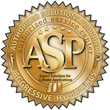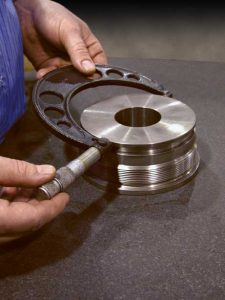Part 1 of a 3 Part Series
The components of hydraulic systems work together intimately. As a result, damage to one component may cause further damage to others. For instance, overheated oil caused by a leaky cylinder seal can break down and cause damage to other cylinders or the pump. That’s why it pays to perform regular maintenance and preventative inspections to eliminate problems before they occur.
Most hydraulic systems consist of a pump, hoses and lines, cylinders and motors, valves, a cooling unit, a reservoir, filters and hydraulic fluid (oil). At the heart of the system is the pump. It uses energy from the engine to pump the fluid and create hydraulic flow and pressure. Valves control the flow of the fluid by restricting or redirecting it. Cylinders and motors are the “muscles”of hydraulic systems. Cylinders have a straight, push-pull action while motors use the energy from the fluid to turn a shaft. The speed at which these components operate is determined by the hydraulic-oil flow rate, while the hydraulic pressure determines the force they exert. The cooling unit acts to cool the fluid after it has gone through the system and the reservoir feeds the pump.
Prevention
The basic prescription for hydraulic maintenance is prevention. If you keep contaminants out of hydraulic systems, you will avoid nearly all common problems and failures. However, some contaminants inevitably do enter the system and scratch close-fitting surfaces in the components. Therefore, follow these guidelines to keep your hydraulic fluid in top condition.
- Keep contaminants out of your hydraulic system. Clean the area around dipsticks, fill plugs and hydraulic filters before removing them to check or change the hydraulic fluid. Keep all fluid containers tightly sealed when stored and pour directly from the container into the system.
- Change the fluid and filter after the initial 50 hours of use. Often, the manufacturing process allows contaminants to enter the hydraulic system. A fluid change after 50 hours will eliminate these particles. Thereafter, change hydraulic fluid and filters at regular intervals.
- Check oil before each use. Verify that fluid levels are adequate and that the fluid is in good condition. An inadequate amount of oil can cause severe damage to pumps. If your oil appears foamy or milky, you may have a leak that is causing air to enter the system. Air will cause jerky and slow operation of the hydraulics. Locate and seal the source of any leak.
Also, air within the system holds moisture. When the system cools down after operation, the moisture can condense and mix with the hydraulic fluid. Water in the hydraulic fluid looks similar to the milky appearance resulting from air contamination.
Regularly check the temperature of the hydraulic fluid during operation. Is the fluid too hot to touch? Does it smell burnt? Your cooling system may be not working properly or you may have pressure-related problems. Check the hydraulic oil cooler or reservoir. They must be kept clean. Remove any dirt or other debris that inhibits airflow around them. If the fluid remains hot for extended periods, it can break down and lose its ability to lubricate adequately.







